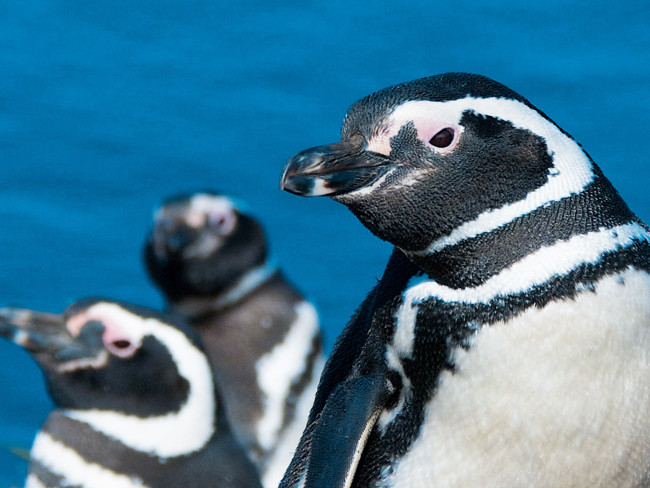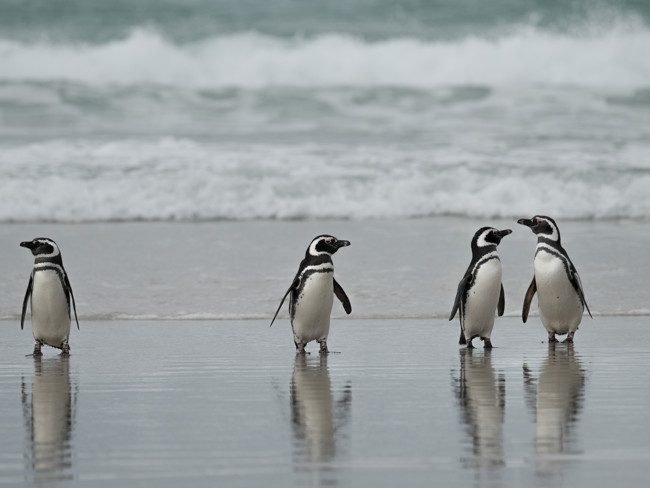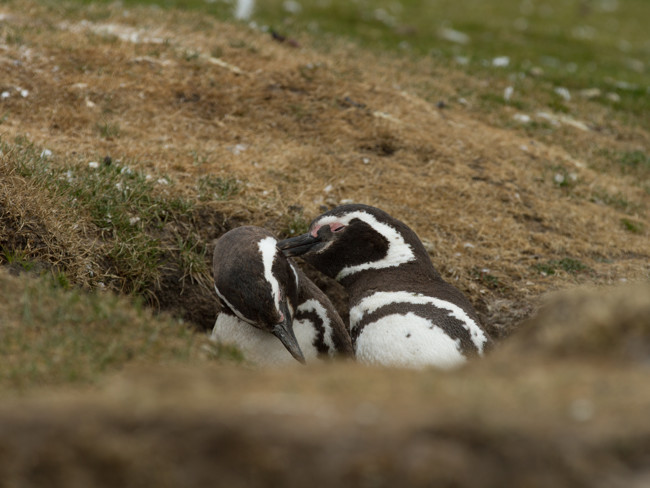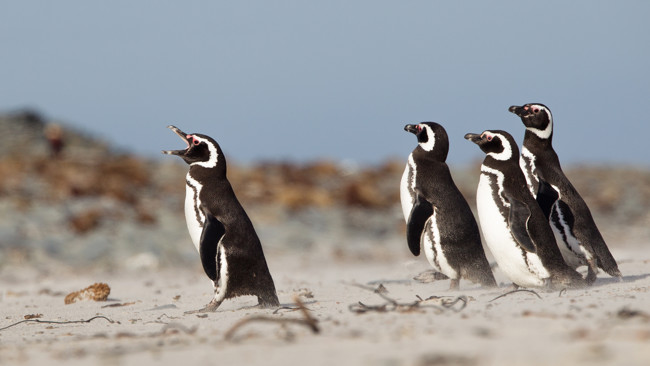Named after an explorer, the Magellanic penguin is capable of migrating impressive distances. With its distinctive braying call, it nests in the tall grasses of the Falkland Islands and along the coast of South America. During our Expedition Antarctica – The Great Penguin Adventure 2026 you will have the opportunity to encounter this social penguin in its natural habitat. Here we share some fascinating facts about the Magellanic penguin.
Named After an Explorer
The Magellanic penguin is named after the Portuguese explorer Ferdinand Magellan, who encountered the species during his circumnavigation of the globe in 1520. However, it is said that it was actually the Italian explorer Antonio Pigafetta, who was on the same expedition, who first spotted the penguin.
Appearance
The Magellanic penguin stands 60–70 cm tall and weighs around 3–6 kg. It is recognizable by its black back, white belly, and two black bands across its chest—one running beneath the chin and another forming an upside-down horseshoe shape across the belly.


A Braying Call
They communicate with loud, screeching sounds known as braying. The male uses this braying call to attract females during the mating season.
Can Migrate Long Distances
The Magellanic penguin mainly lives on the Falkland Islands and along the coastal islands of South America, primarily in Argentina and Chile. However, after the breeding season, it can migrate north along the coast—sometimes as far as 3,000 kilometers—in search of food in warmer waters.
Nesting in Grass and Shrubs
They dig their nests in burrows underground or hide them in tall grass and among shrubs for protection. The faithful pair lays two eggs and takes turns incubating them. The chicks remain in the nest until they develop adult plumage and, unlike some other penguin species, do not form small groups of young penguins known as crèches.
Skilled Swimmers
The Magellanic penguin molts (sheds its feathers) once a year. During this period, it is unable to swim and must fast for several weeks. Otherwise, it is an excellent swimmer, capable of diving to depths of up to 75 meters. Its diet mainly consists of fish, squid, and krill.


Cooling Down
To cope with heat, they can pant like a dog or flap their flippers to cool down. The pink skin around their eyes also helps regulate body temperature. After all, they sometimes live in quite warm environments.
Large Colonies
Magellanic penguins live in large colonies, with up to tens of thousands of individuals during the breeding season. One of the largest colonies is found in Punta Tombo, Argentina, where over a million penguins gather.
Lifespan
Magellanic penguins can live up to 25 years in the wild, and even longer in captivity, where they are not exposed to predators or environmental threats.



